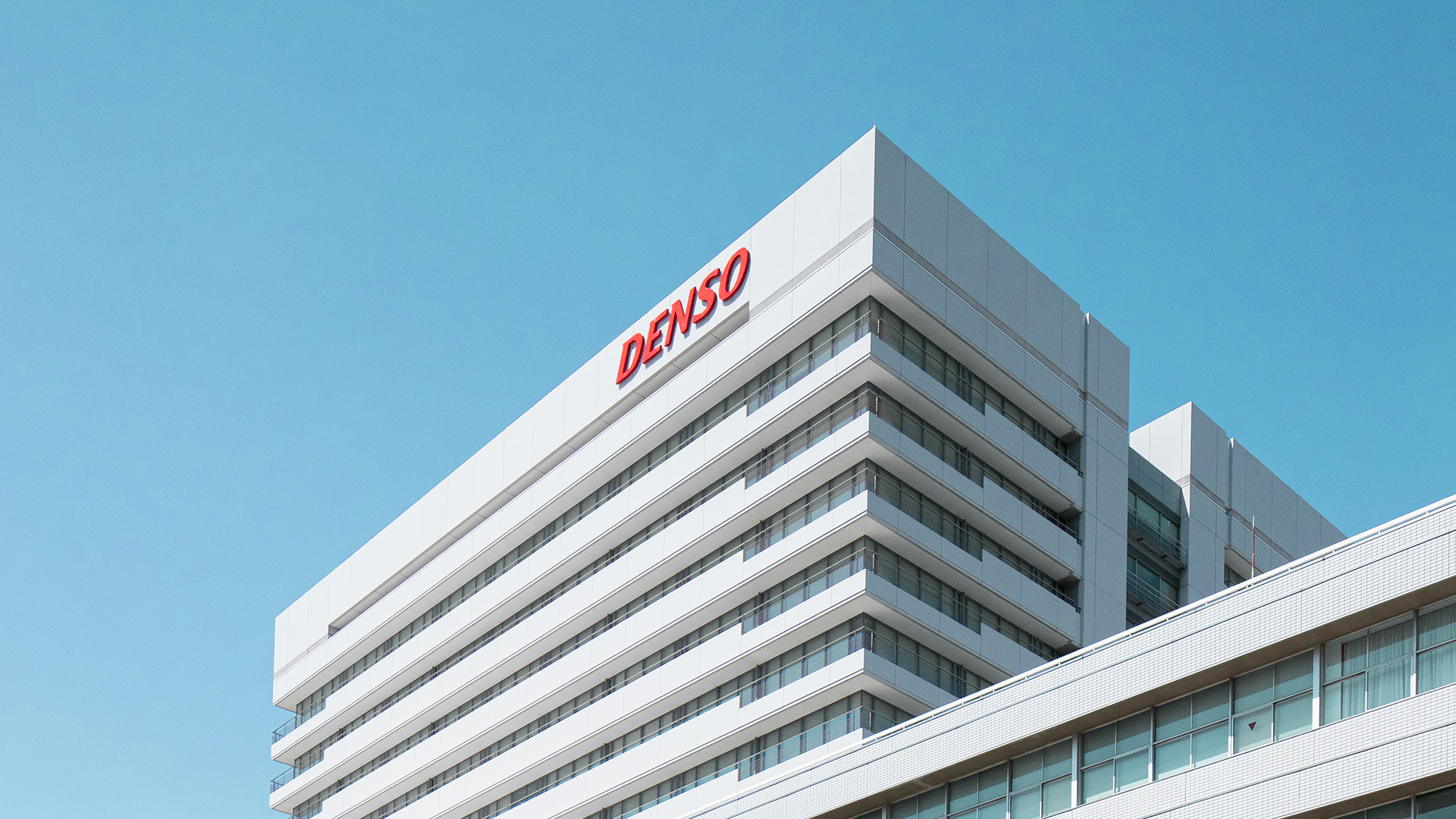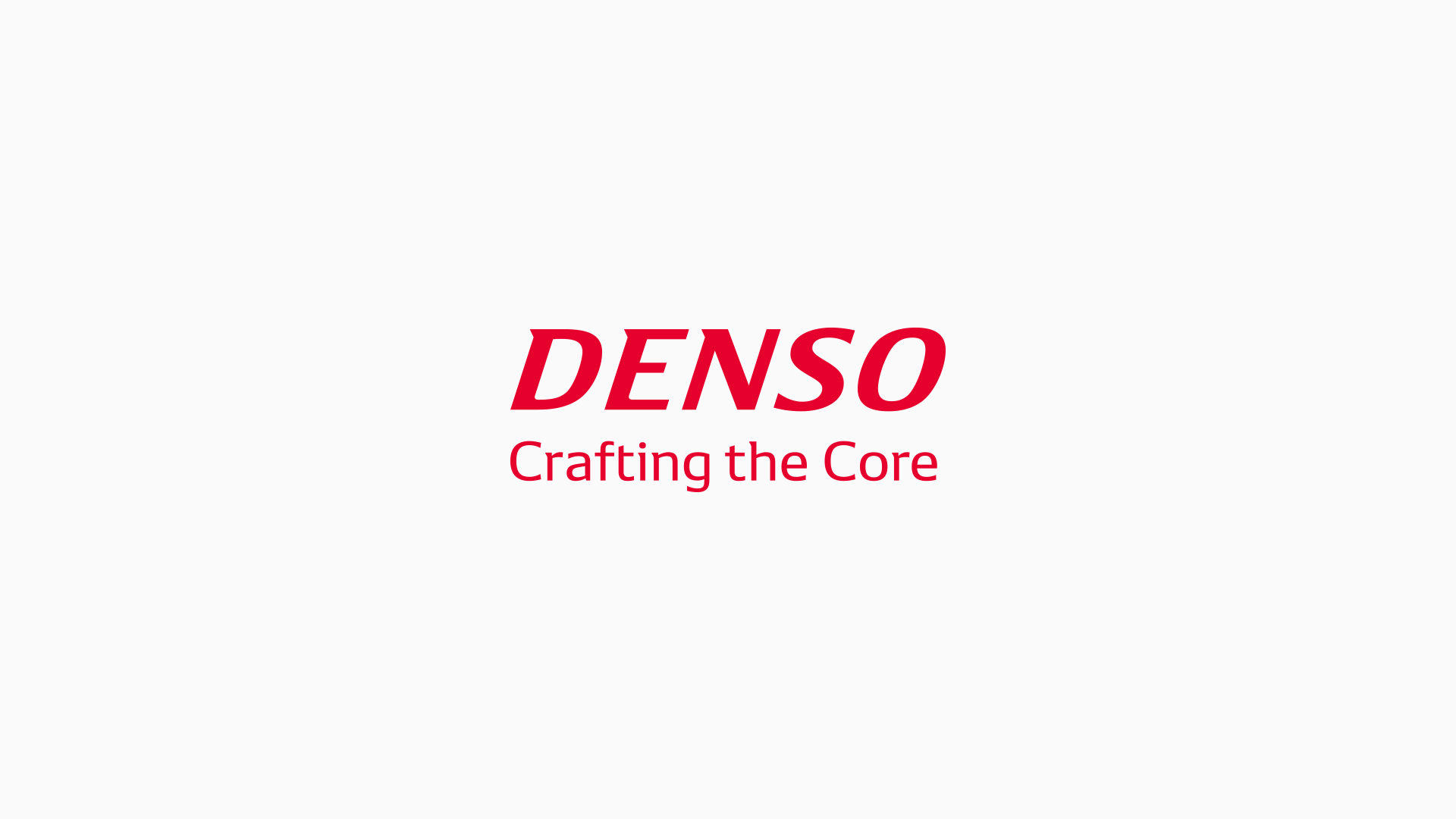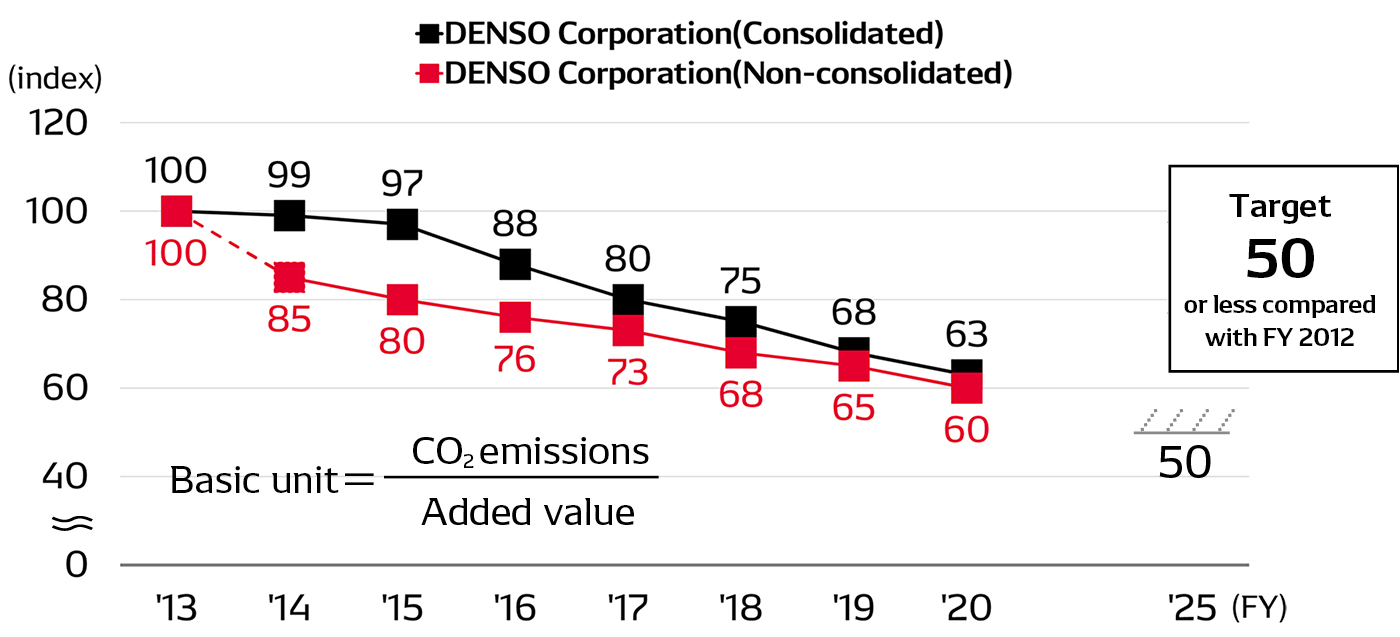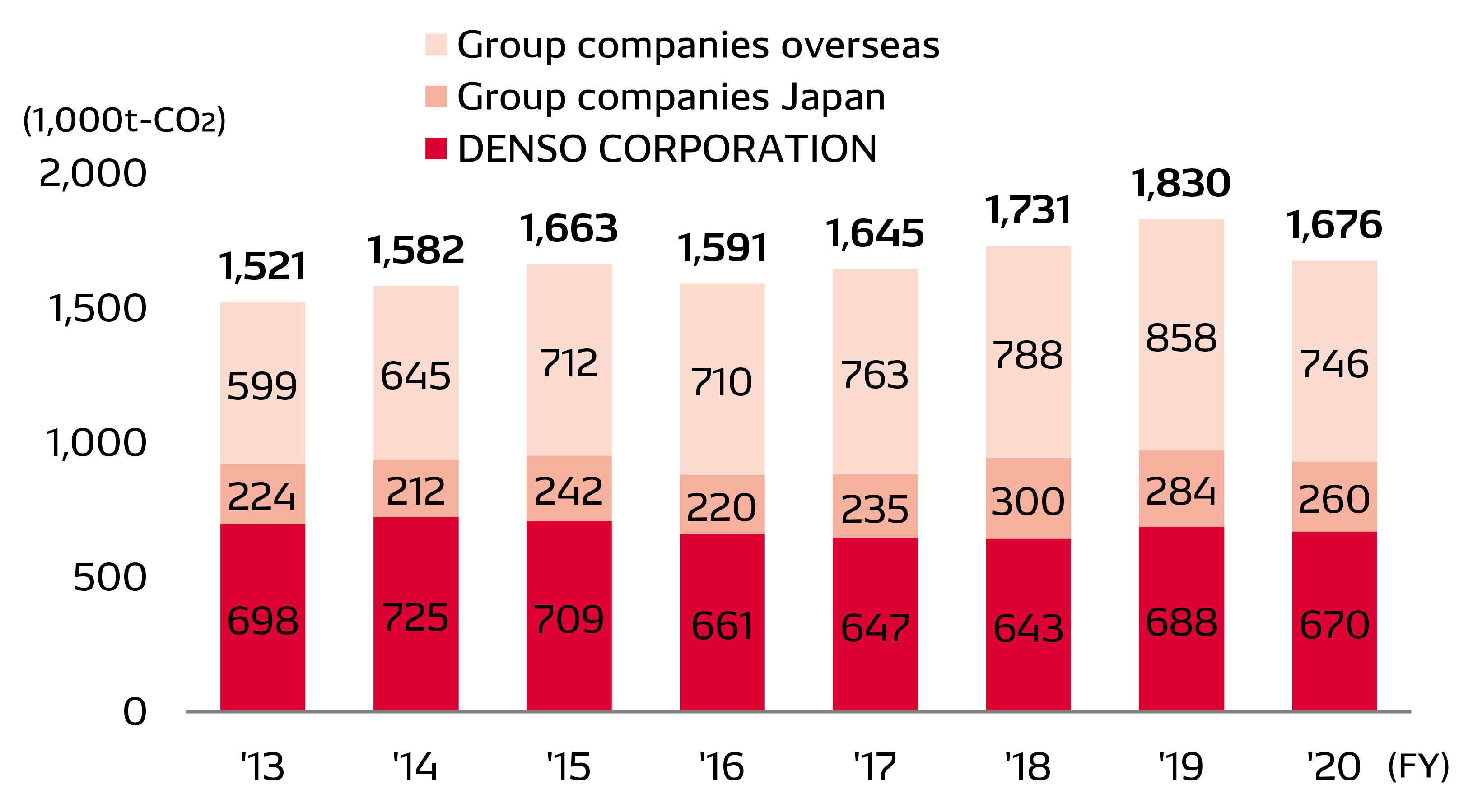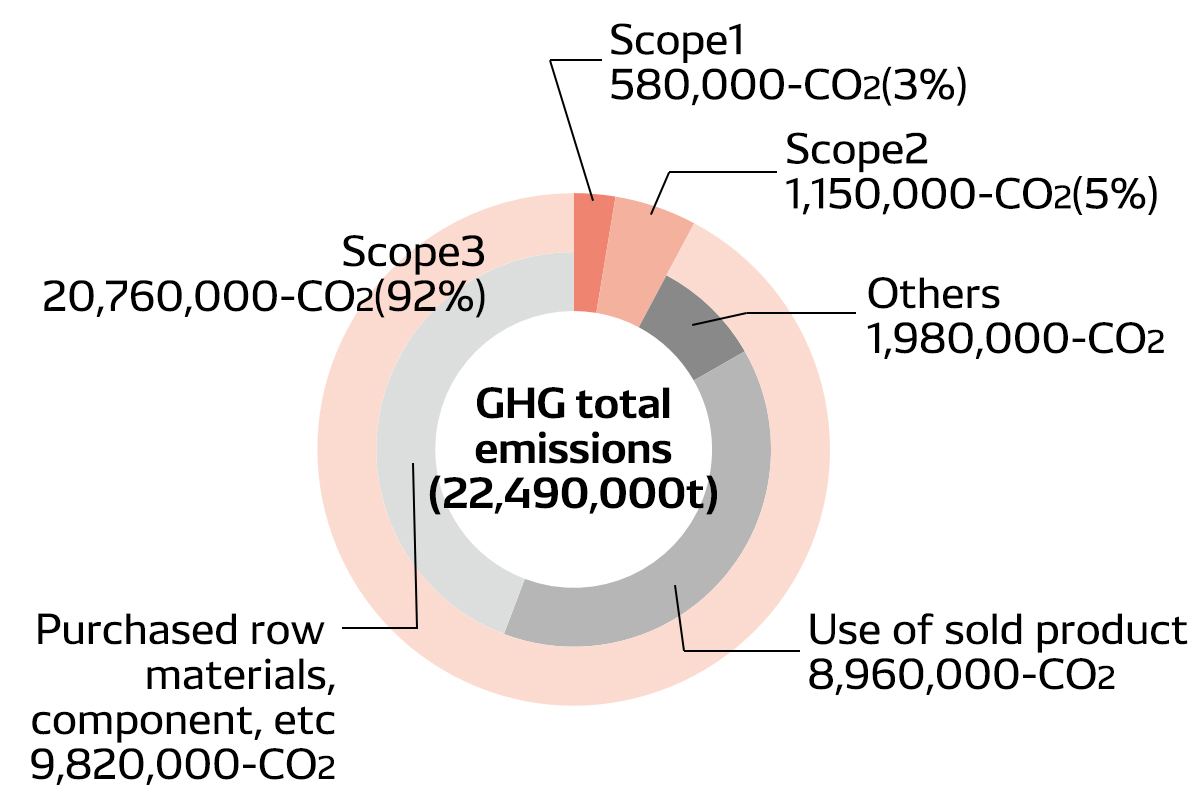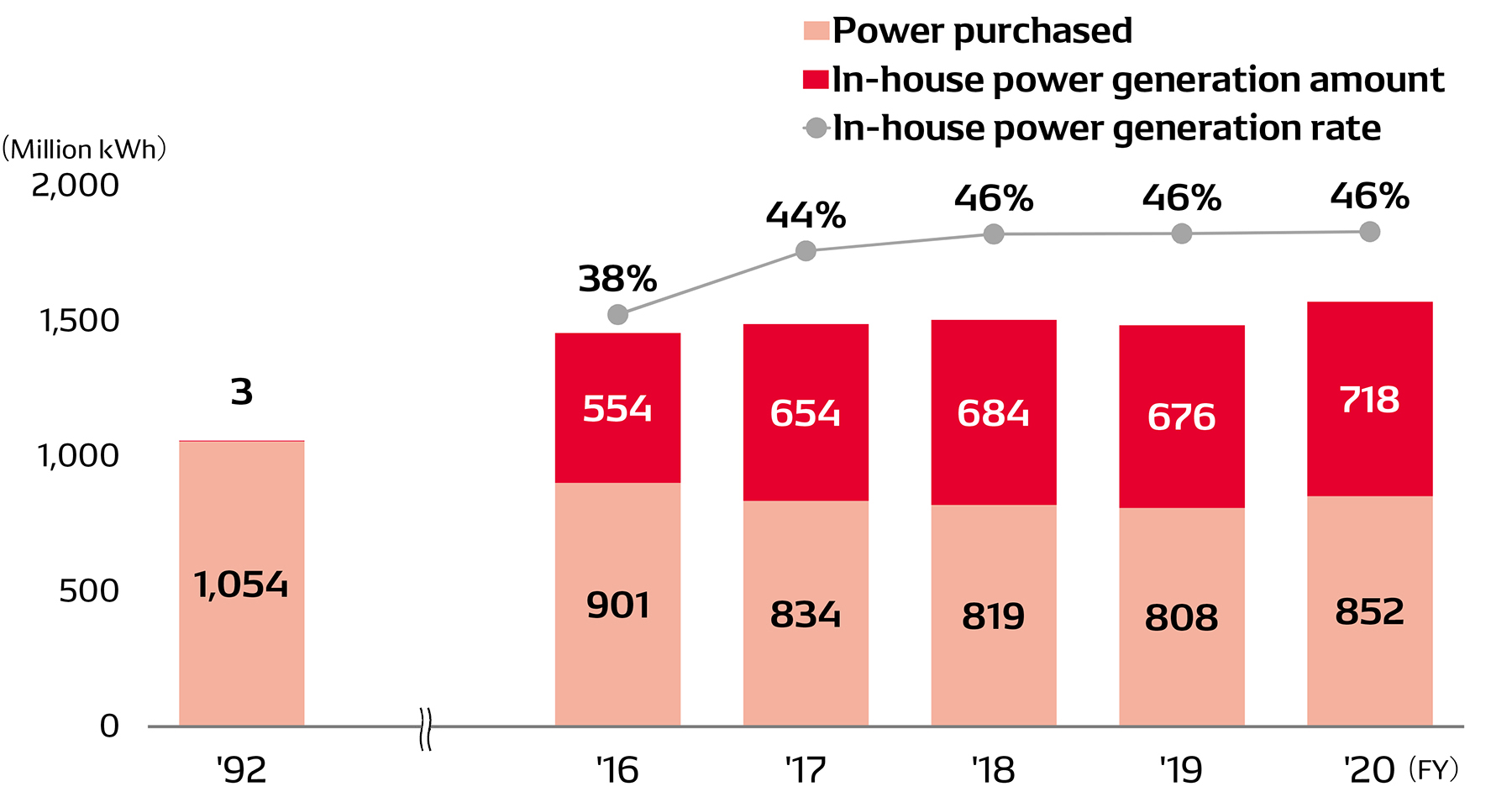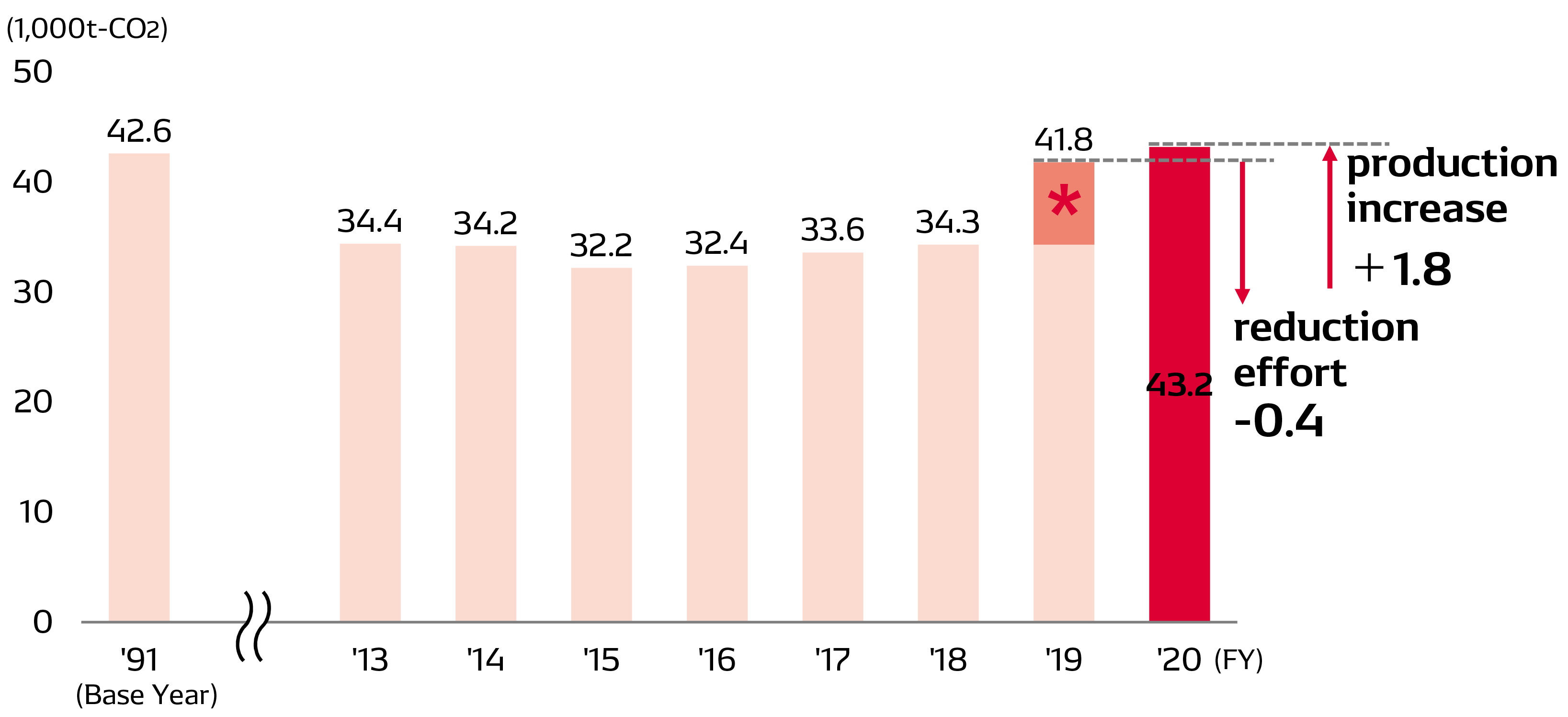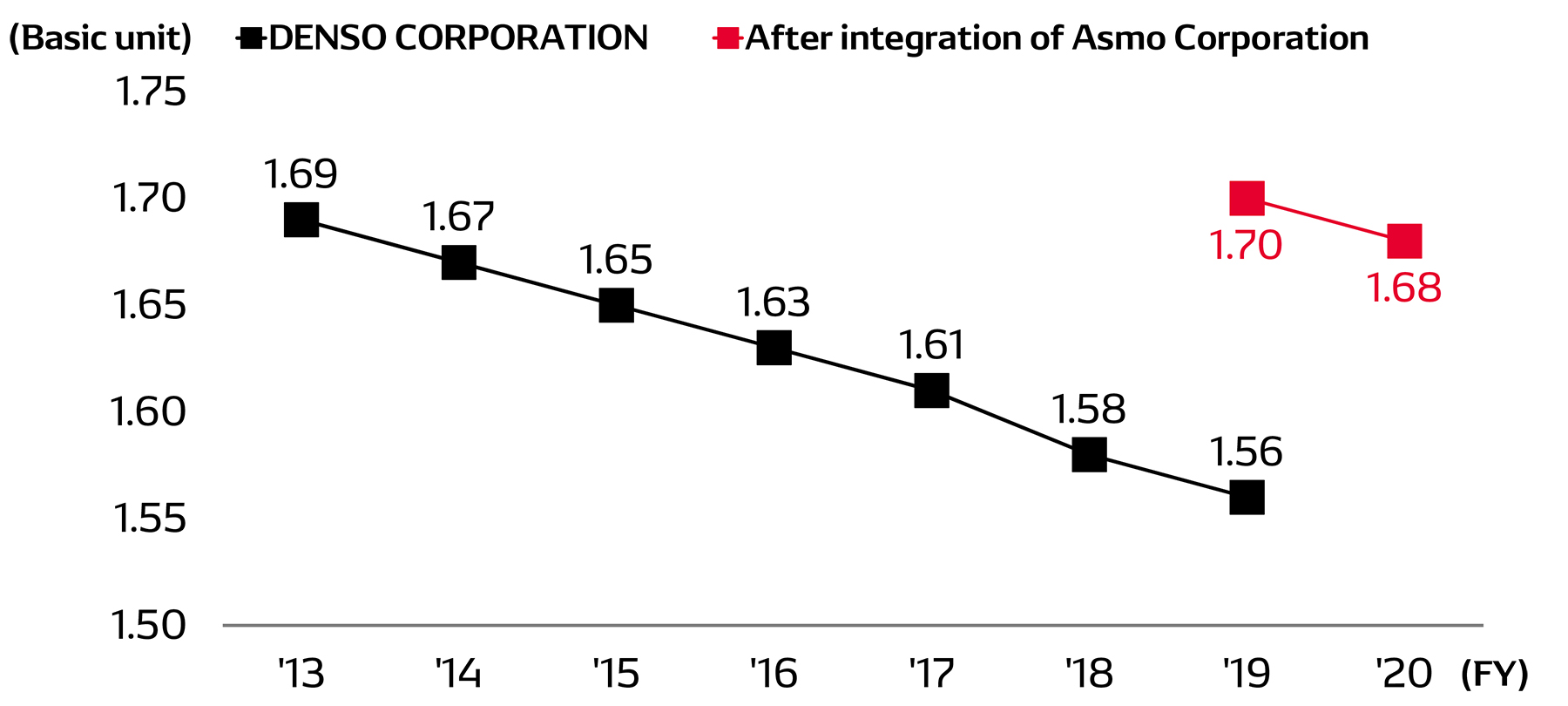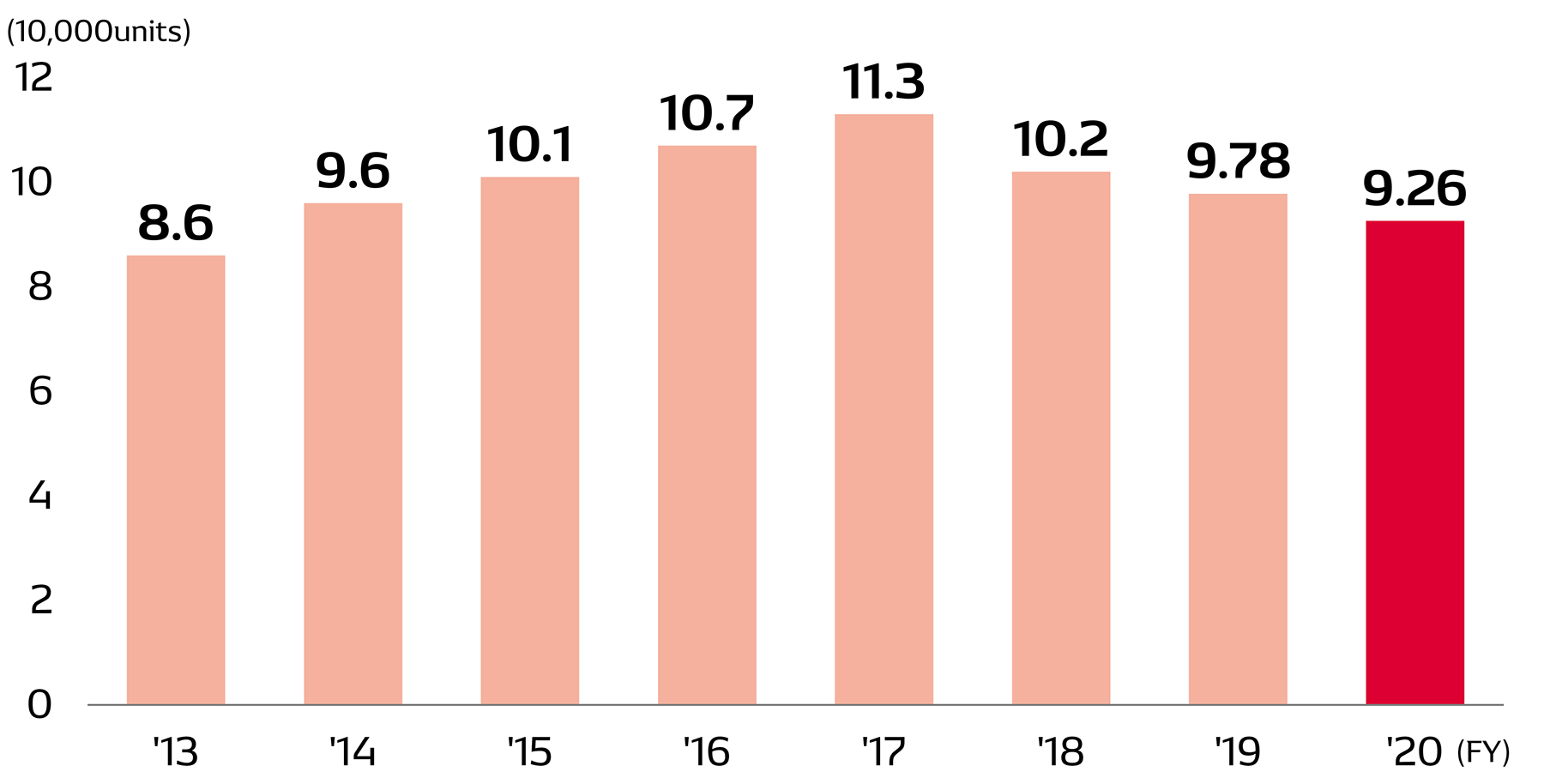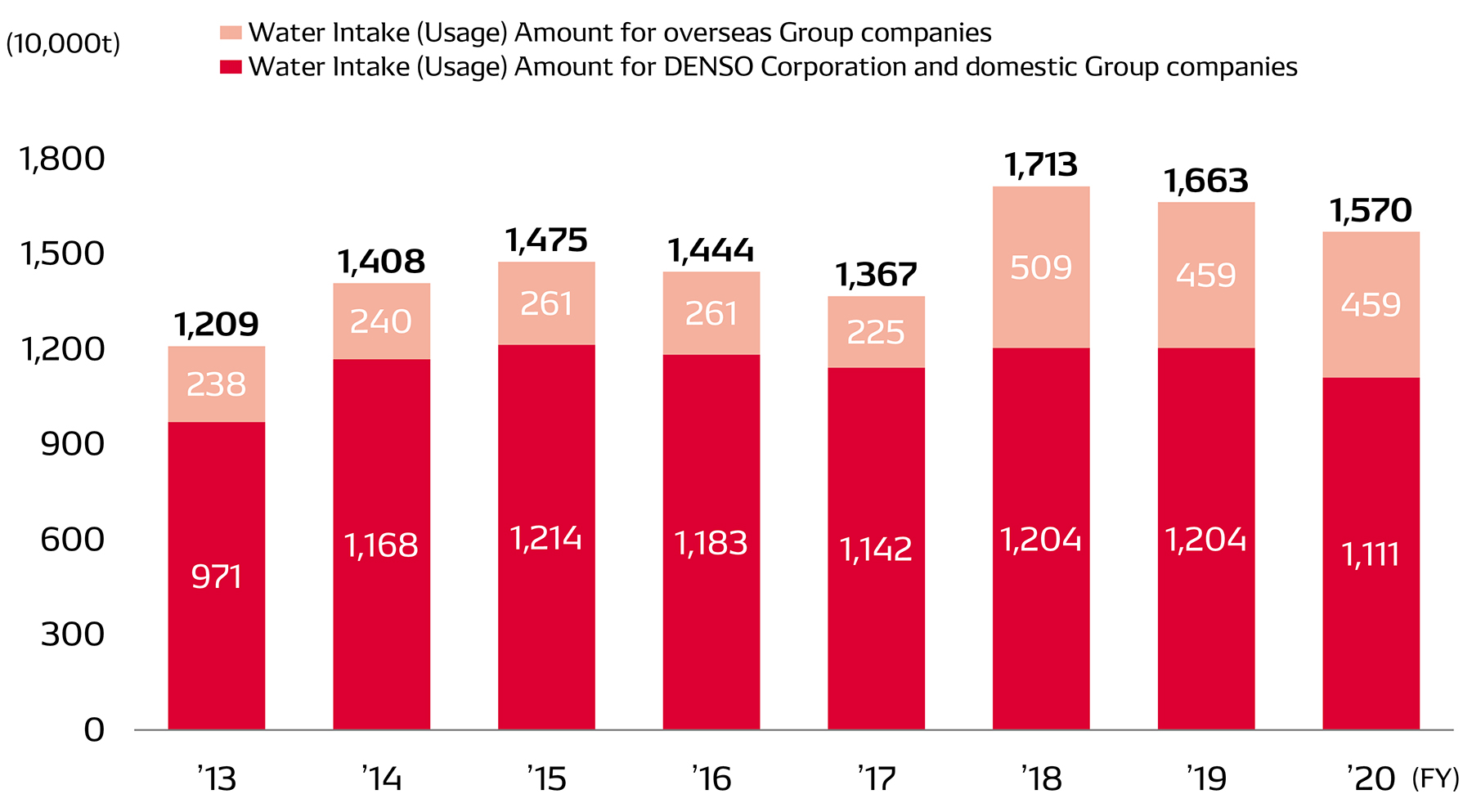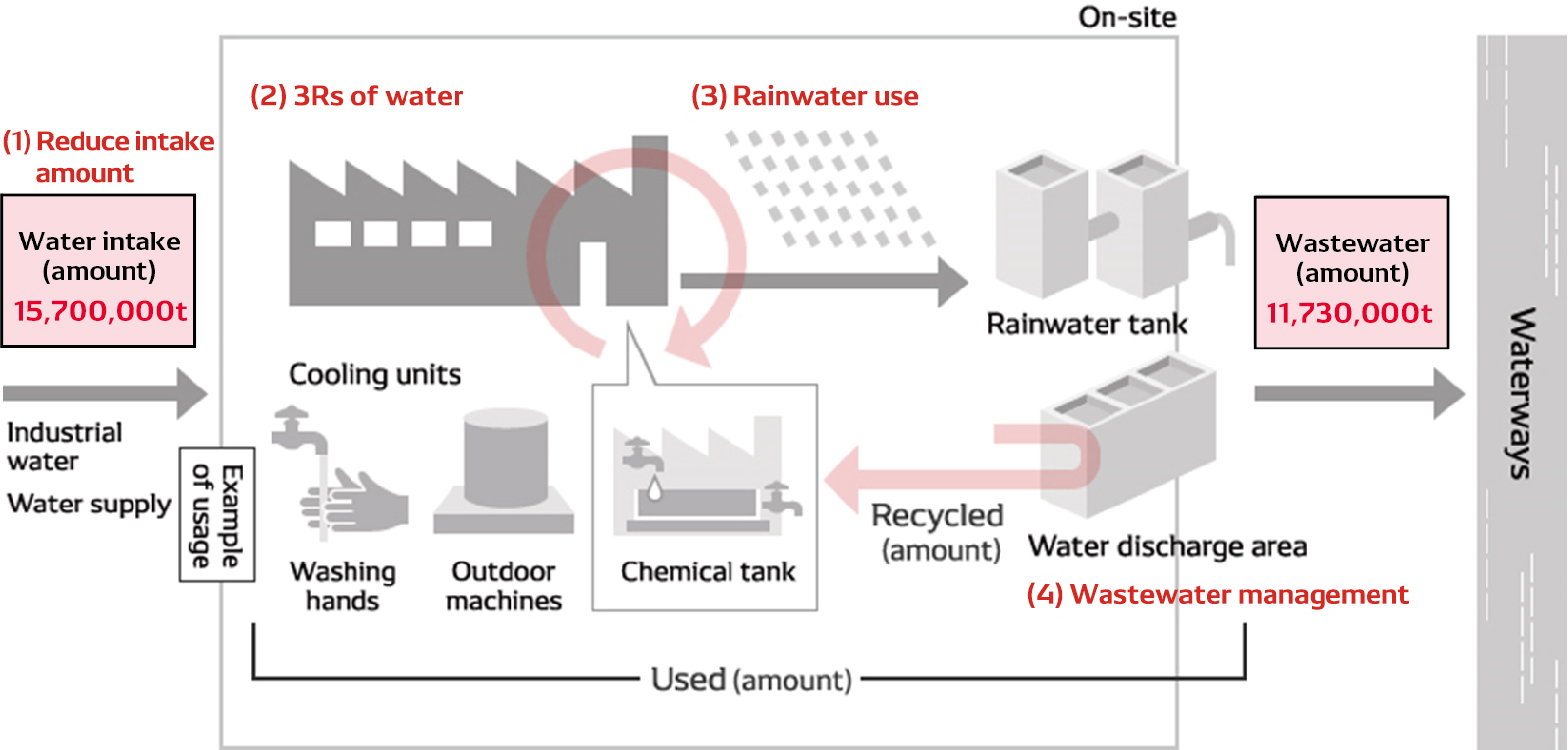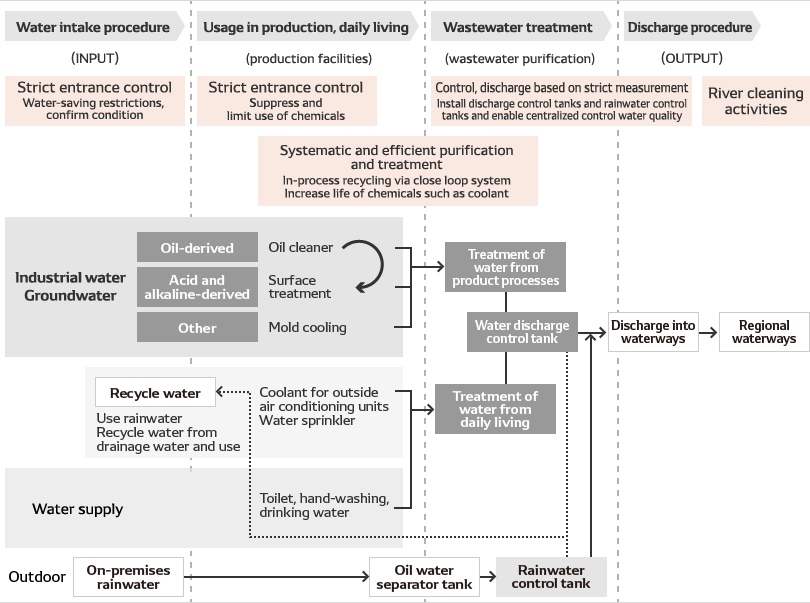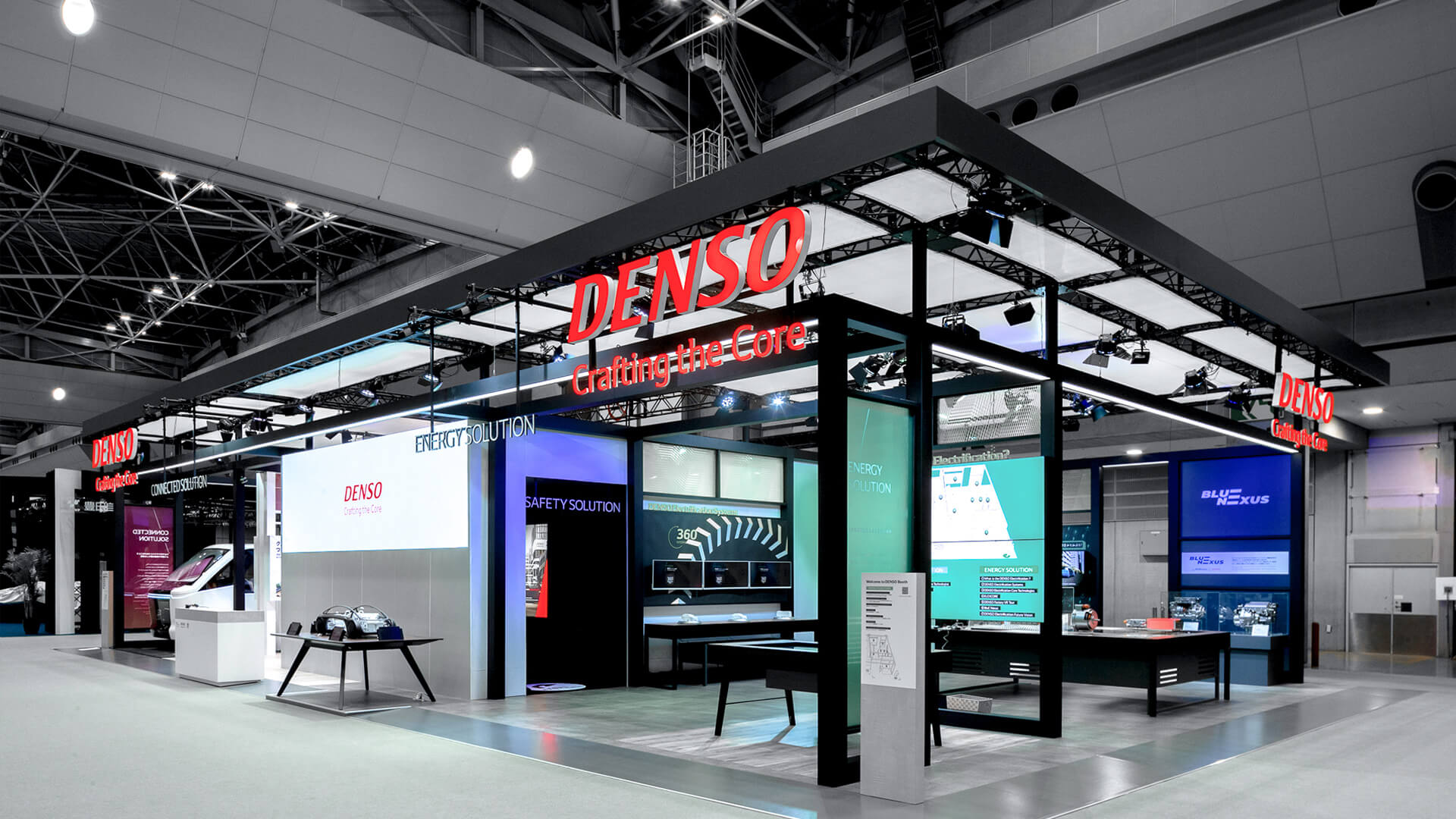Data compilation FY2020 (Environmental report)
Action 2 <Minimum CO2 Monozukuri>
CO2 emissions basic unit of the DENSO Group
CO2 emissions
Proportion of total CO2 emissions throughout value chain
The proportions expressed in the graph are based on the international guideline "GHG Protocol Scope 3 Standard" related to the calculation and reporting of CO2 emissions throughout the value chain.
* Of the "scopes" (scope of emissions) for greenhouse gases: (a) Scope 1 emissions are direct GHG emissions from the entity such as gasoline or the combustion of heavy oil; (b) Scope 2 emissions are indirect GHG emissions resulting from the generation of electricity; and (c) Scope 3 emissions include indirect GHG emissions from related activities undertaken outside of the entity such as raw material procurement, production, disposal, logistics, and sales.
For reference: Basic rationale on the calculation of total greenhouse gas emissions
At DENSO, all greenhouse gases defined in the Kyoto Protocol are cumulatively calculated, specifically, CO2 (an energy-related greenhouse gas) and five gases (non-energy-related greenhouse gases), including PFC, HFC, SF6, N2O, and CH4. The emission coefficient set by region is the conversion factor for CO2 at DENSO.
In Japan, the Company uses the conversion factors shown in the table below. Outside Japan, DENSO uses the factors publicly announced in each global region.
Please note that in this report the reduction effect of CO2 by co-generation is converted by the average of conversion factors for different types of thermal power generation. The effect of co-generation is included in the CO2 emissions of the Company. As for the emissions of the five gases, from fiscal 2007, the Company began using the instructions of the Law Concerning the Promotion of the Measures to Cope with Global Warming enacted and enforced in Japan.
Conversion factors for CO2 used in the calculation of CO2 emissions
| Electricity | 0.453kg-CO2/kWh |
|---|---|
| Heavy fuel oil (A) | 2.71kg-CO2/L |
| Kerosene | 2.489kg-CO2/L |
| Propane | 2.999kg-CO2/kg |
| Light crude oil | 2.585kg-CO2/L |
| City gas | 2.171kg-CO2/m3 |
* Reference of conversion factor for CO2: Japan Auto Parts Industries Association
Electric power usage (fiscal 1992 - fiscal 2020) [DENSO CORPORATION (Japan)]
CO2 emissions from logistics [DENSO CORPORATION]
*CO2 emissions by Asmo Corporation(integrated into Denso Corporation in April 2018).
Amount of CO2 emissions in logistics / Physical production and sales (Unit: 100 million yen) [DENSO Corporation]
Action 4 <Eco-Materials & Low-Emissions>
Product reconditioning volumes at DENSO REMANI [Japan]
Action 5 <Minimum Environmental Impact Production>
Water Intake (Usage) Amount
Water Intake (Usage) Amount
Note: Water intake increased compared to the previous fiscal year as a result of changes made to calculation definitions for overseas group companies beginning in fiscal 2018.
Water Management in Factories
DENSO CORPORATION's water resource management system
Action 8 <Workplaces Surrounded by Greenery and an Abundance of Nature>
Tree-Planting Efforts in Collaboration with Local Communities [DENSO CORPORATION and the DENSO Group (Japan)]
| Number of times activities were held | Number of participants | Total number of saplings planted |
|---|---|---|
| 56 | 8,439 * Local community members and employees of DENSO CORPORATION and the DENSO Group (Japan) and their families |
22,812 |



